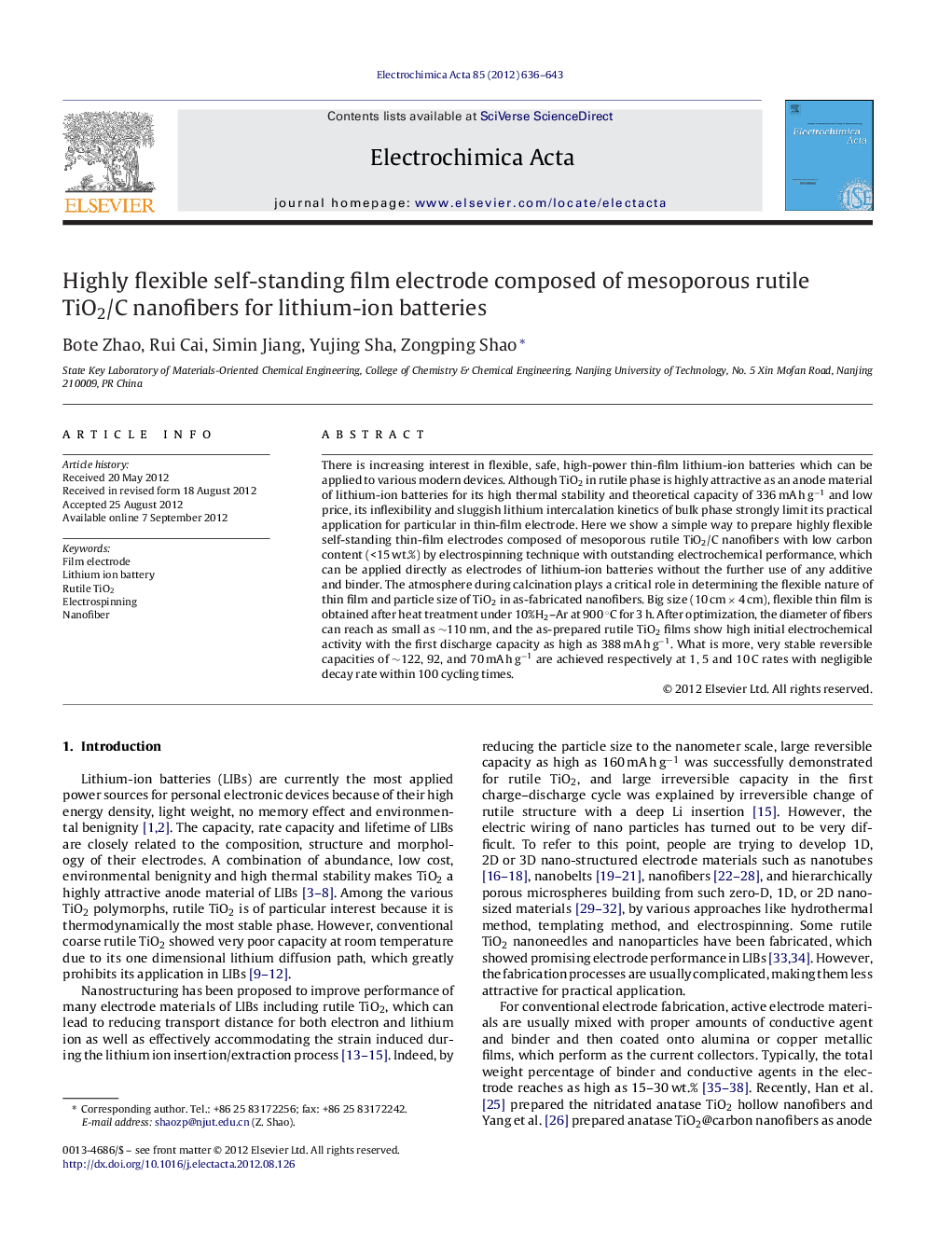| Article ID | Journal | Published Year | Pages | File Type |
|---|---|---|---|---|
| 187850 | Electrochimica Acta | 2012 | 8 Pages |
There is increasing interest in flexible, safe, high-power thin-film lithium-ion batteries which can be applied to various modern devices. Although TiO2 in rutile phase is highly attractive as an anode material of lithium-ion batteries for its high thermal stability and theoretical capacity of 336 mA h g−1 and low price, its inflexibility and sluggish lithium intercalation kinetics of bulk phase strongly limit its practical application for particular in thin-film electrode. Here we show a simple way to prepare highly flexible self-standing thin-film electrodes composed of mesoporous rutile TiO2/C nanofibers with low carbon content (<15 wt.%) by electrospinning technique with outstanding electrochemical performance, which can be applied directly as electrodes of lithium-ion batteries without the further use of any additive and binder. The atmosphere during calcination plays a critical role in determining the flexible nature of thin film and particle size of TiO2 in as-fabricated nanofibers. Big size (10 cm × 4 cm), flexible thin film is obtained after heat treatment under 10%H2–Ar at 900 °C for 3 h. After optimization, the diameter of fibers can reach as small as ∼110 nm, and the as-prepared rutile TiO2 films show high initial electrochemical activity with the first discharge capacity as high as 388 mA h g−1. What is more, very stable reversible capacities of ∼122, 92, and 70 mA h g−1 are achieved respectively at 1, 5 and 10 C rates with negligible decay rate within 100 cycling times.
